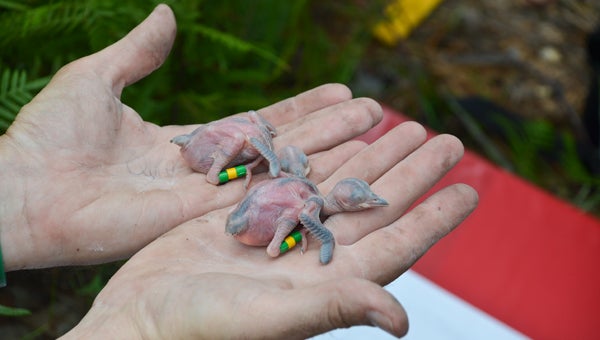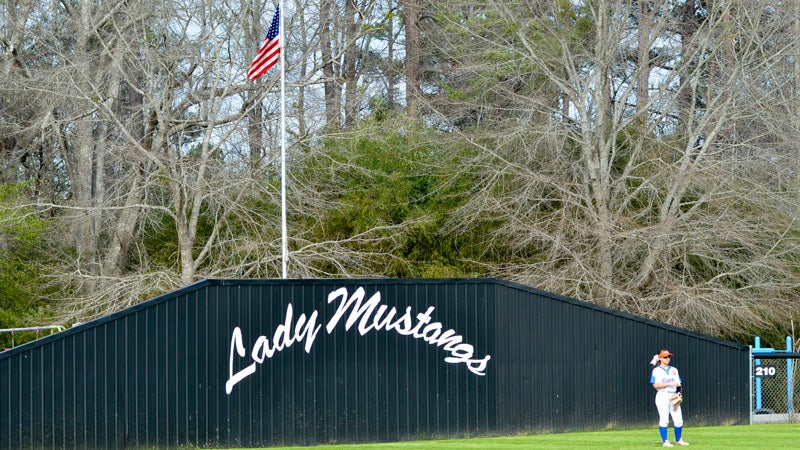Endangered red-cockaded woodpeckers nest near lake
Published 9:19 pm Thursday, June 12, 2014

Keeping track: Eric Spadgenske with U.S. Fish and Wildlife Service bands a local endangered red-cockaded woodpecker nestling for identification purposes. See more photos on Page 8.
Lake Mitchell is a place of fun and activity during the spring and summer months, but an area bordering the lake is also home to some residents you might never see.
About 15 groups of the endangered red-cockaded woodpecker make their home in a 2,000-plus acre wooded area bordering the lake. There are only about 250 groups of the woodpeckers in Alabama.
The birds were once considered common throughout the longleaf pine ecosystem, which covered about 90 million acres from New Jersey to Florida to Texas.
But European settlement in the 1700s, timber harvesting in the 1800s and tree farming in the mid-1900s cut the red-cockaded woodpeckers’ habitat to a couple of million acres, decimating the population.
Even with efforts to re-introduce longleaf pines, most of the trees are young, whereas the woodpeckers prefer older trees, and new-growth forests are denied fires to limit undergrowth.
Four different entities own the land at Lake Mitchell where the woodpeckers can be found. Alabama Power owns about 1,500 acres. On Monday, Alabama Power officials accompanied Eric Spadgenske with the U.S. Fish and Wildlife Service on an effort to “band” red-cockaded woodpecker nestlings for identification.
Departing from Higgins Ferry Park, the party took two boats to the area and then hiked to a tree where an artificial cavity had been installed.
After knocking on the tree with a rock to chase any adults out of the cavity, Spadgenske extended a pole with a camera on top up to the cavity and saw two nestlings inside.
Spadgenske leaned a ladder up against the tree, climbed up, pulled out the nestlings and brought them back down to the ground, where he placed color-coded bands on their legs and made a record of the birds.
After about 15 minutes of work, the woodpeckers were placed back in their cavity.
Adult red-cockaded woodpeckers are about 7 inches long with a wingspan of about 15 inches. Their backs is barred with black and white horizontal stripes. Rarely visible, the male has a small red streak on each side of a black cap, giving the bird its name.
Red-cockaded woodpeckers live in a family group called a cluster, which usually includes a mating pair along with “helpers” and possibly nestlings or fledglings.
“Helpers” are male offspring who never leave the cluster. One, two or three helpers can assist with incubating eggs, maintaining the cavity or other chores.
Some males leave to make their own cavities and try to attract a mate.
Female offspring don’t have the option of staying with the cluster. They’ll fly off to try to find a “bachelor” with his own cavity.
A clutch of usually four eggs are laid and incubate for 11 days before the nestlings hatch. Nestlings are fed insects including beetles, ants, roaches and spiders in various stages of development every 15 minutes.
Once they’re able to leave the nest, the birds are considered fledglings.
The birds are banded as nestlings.



